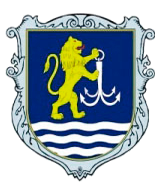OPTIMIZATION OF PASSENGER VESSELS DIMENSIONAL MODERNIZATION TAKING INTO ACCOUNT THE ENERGY EFFICIENCY
Abstract
The environmental friendliness of any production is a modern requirement, which, among others, concerns the maritime shipping. The EEDI energy efficiency coefficient is an indicator that evaluates the ratio of the vessels’ negative impact to the environment and the vessel transport work. The current regulatory framework of the IMO in the field of international shipping is aimed at ensuring a gradual reduction of this indicator, what in the complex will ensure technologically possible minimization of the maritime shipping environmental impact. One of the directions for ensuring the permissible level of EEDI is modernization, including dimensional modernization, as a result of which the GT of the vessel increases, and this, in turn, increases the volume of vessel transport work and reduces the corresponding level of EEDI. The paper analyzes the energy efficiency of the world's leading cruise companies’ vessels for determination their modernization attractiveness. An optimization model for the passenger vessel dimensional modernization for the determination of the additional section length in the middle frame area of the ship is proposed, based on an integral consideration of the economic and ecological aspects of the vessel further operation. An experimental study of the model was carried out and substantiated its reliability and suitability for practical use in decision-making processes regarding the passenger vessels dimensional modernization.
Downloads
References
2. Міжнародна конвенція щодо запобігання забруднення з суден 1973 року з поправками. URL: Imo.org/en/About/Conventions/Pages/International-Convention-for-the-Prevention-of-Pollution-from-Ships-(MARPOL).
3. Резолюція комітету з захисту морського середовища Міжнародної морської організації 231(65). 2013 Guidelines for calculation of reference lines for use with the energy efficiency design index (EEDI) URL: https://wwwcdn.imo.org/localresources/en/KnowledgeCentre/IndexofIMOResolutions/MEPCDocuments/MEPC.231(65).pdf
4. Implementing Energy Efficiency Design Index (EEDI) https://www.irclass.org/media/1393/energy-efficiency-design-index.pdf
5. IMO (2010) “Module 2 – Ship Energy Efficiency Regulations and Related Guidelines”, IMO Train the Trainer (TTT) Course on Energy Efficient Ship Operation.
6. IMO (2014) “2014 Guidelines on the method of calculation of the Attained Energy Efficiency Design Index (EEDI) for new ships”, MEPC 66/21/Add.1 p: 1.
7. IMO (2010) “Preventions of Air Pollution from Ships”, Marine Environment Protection Committee, 59th Session, Agenda item 4.
8. FaiC (2011) “IMO Technical Measures in Reducing Greenhouse Gas Emissions from ships: A Lloyd’s Register Perspective”,Lloyd’s Register Approach to IMO Technical Measures in Reducing Greenhouse Gas Emissions from Ships.
9. Energy Efficiency Design Index (EEDI) https://www.imo.org/en/OurWork/Environment/Pages/Technical-and-Operational-Measures.aspx
10. MARPOL Annex VI, MEPC.1 / Circ.684. Guidelines for voluntary use of the ship energy efficiency operational indicator (EEOI), 17 August 2009.
11. MEPC.1/Circ.815: 2013. Guidance on treatment of innovative energy efficiency technologies for calculation and verification of the attained EEDI for ships in adverse conditions.
12. Tokuslu, A. (2020). Analyzing the Energy Efficiency Design Index (EEDI) Performance of a Container Ship. International Journal of Environment and Geoinformatics (IJEGEO), 7(2): 114-119. https://doi.org/10.30897/ijegeo.703255
13. Ančić, Ivica & Sestan, Ante & Vladimir, Nikola. (2015). Modification of the EEDI for Ro-ro Passenger Ships. https://doi.org/10.5957/WMTC2015-053
14. ICCT (2011) “The Energy Efficiency Design Index (EEDI) for New Ships”, Policy Update 15, October 3-2011.
15. Tran, Tien Anh. (2016). Calculation and Assessing the EEDI Index in the Field of Ship Energy Efficiency for M/V Jules Garnier. Journal of Marine Science: Research & Development. 06. https://doi.org/10.4172/2155-9910.1000212 .
16. Psaraftis, Harilaos & Kontovas, Christos. (2014). Ship speed optimization: Concepts, models and combined speed-routing scenarios. Transportation Research Part C: Emerging Technologies. 44. 52–69. https://doi.org/10.1016/j.trc.2014.03.001 .
17. Haakont (2011) “Development of small versus large hydropower in Norwaycomparision of environmental impacts”, Energy Procedia 20: 185-199.
18. Tu, H.; Yang, Y.; Zhang, L.; Xie, D.; Lyu, X.; Song, L.; Guan, Y.; Sun, J. A modified admiralty coefficient for estimating power curves in EEDI calculations. Ocean Eng. 2018, 150, 309–317
19. Ren H, Ding Y, Sui C. Influence of EEDI (Energy Efficiency Design Index) on Ship–Engine–Propeller Matching. Journal of Marine Science and Engineering. 2019; 7(12):425. https://doi.org/10.3390/jmse7120425
20. Yuan Y., Z. Li, R. Malekian, X. Yan (2017) Analysis of the operational ship energy efficiency considering navigation environmental impacts. Journal of Marine Engineering & Technology 16(3): 150-159. https://doi.org/10.1080/20464177.2017.1307716 .
21. Onishchenko, O., Golikov, V., Melnyk, O., Onyshchenko, S., Obertiur, K. Technical and operational measures to reduce greenhouse gas emissions and improve the environmental and energy efficiency of ships. Scientific Journal of Silesian University of Technology. Series Transport. 2022, 116, 223-235. https://doi.org/10.20858/sjsutst.2022.116.14.
22. Melnyk, O., Onyshchenko, S., Koryakin, K. (2021) Nature and origin of major security concerns and potential threats to the shipping industry. Scientific Journal of Silesian University of Technology. Series Transport, 113, pp. 145–153 https://doi.org/10.20858/sjsutst.2021.113.11
23. Гундобин А.А., Финкель Г.Н. Размерная модернизация и переоборудование судов: монография. Ленинград: Судостроение, 1977, 192 с.
24. Wolf, R., Dickman, J., & Boas, R. (2005). Ship Design Using Heuristic Optimization Methods. 46th AIAA/ASME/ASCE/AHS/ASC Structures, Structural Dynamics and Materials Conference. https://doi.org/10.2514/6.2005-1980
25. Шумило О.М. Визначення оптимальних розмірів подовження пасажирських суден при їх модернізації. Розвиток транспорту: Науковийжурнал. № 1 (12), 2022. С. 89-104.





